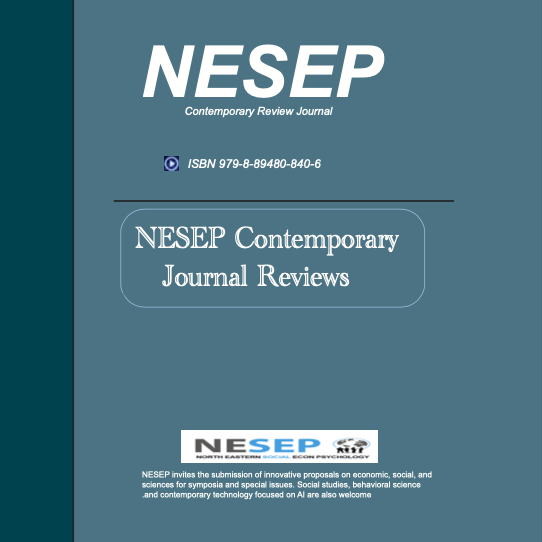Featured Issues
Below are compilations of selected work related to a contemporary matter area.

Palma, Spain. 6/30~7/2, 2025.
ISBN 2: 979-8-89480-848-2
Annual Conference
Publisher: NESEP
The Effect of Brassica oleracea var. sabellica Extract on the Ability to Inhibit Steel Corrosion
Abstract:
Metal corrosion in the US costs $2.5 trillion annually, which is equivalent to ~3.4% of the world’s gross domestic product. Implementing corrosion inhibition methods will result in global savings of 15-35% of that cost, or $375-875 billion. Kale extract could have the properties to minimize corrosion. This study will test the inhibition properties of kale extract on steel corrosion. To create the kale extract, kale leaves were dried in an incubator. They were ground into a fine powder and transferred into a flask, with the addition of 250 ml of water. The mixture was heated until 50 ml evaporated, then it was stored in a fridge for later use. The steel was cut into 6 sheets. 3 steel samples were kept for the experimental group and 3 steel samples were kept for the control group. The experimental group was submerged in the kale extract. All 6 steel pieces were submerged in hydrochloric acid. Mass and observations were taken daily. Over time the mass of the control group diminished faster than the experimental group. The corrosion rate was greater in the control group than the experimental group. These results demonstrate kale extract is an effective inhibitor for steel corrosion.
Keywords: Brassica oleracea, steel corrosion, kale leaves
References
-
Afonso, Gara, Filippo Curti, and Atanas Mihov (2019). "Coming to Terms with Operational Risk," Federal Reserve Bank of New York Liberty Street Economics, January 7, https://libertystreeteconomics.newyorkfed.org/2019/01/coming-to-terms-with-operational-risk/.
-
Barrett, Devlin (2020). "Capital One fined $80 million for 2019 hack of 100 million credit card applications," August 6, https://www.washingtonpost.com/national-security/capital-one-fined-2019-hack/2020/08/06/90c2c836-d7f3-11ea-aff6-220dd3a14741_story.html
-
Board of Governors of the Federal Reserve System November (2021). Financial Stability Report, pg. 3, https://www.federalreserve.gov/publications/files/financial-stability-report-20211108.pdf.
-
Eisenbach, Thomas, Anna Kovner, and Michael Junho Lee (2021). "Cyber risk and the U.S. financial system: A pre-mortem analysis," Journal of Financial Economics, forthcoming.
-
Federal Bureau of Investigation (FBI), Cybersecurity and Infrastructure Security Agency, Office of the Director of National Intelligence, and National Security Agency (2021). Joint statement, January 5, https://www.cisa.gov/news/2021/01/05/joint-statement-federal-bureau-investigation-fbi-cybersecurity-and-infrastructure.
-
National Institute of Standards and Technology (NIST) (2018). "Framework for improving critical infrastructure cybersecurity," v. 1.1, April 16, https://nvlpubs.nist.gov/nistpubs/CSWP/NIST.CSWP.04162018.pdf.
-
M. Du, F. Li, G. Zheng, and V. Srikumar, “DeepLog: AnomalyDetection and Diagnosis from System Logs through DeepLearning,”ACM CCS`17, 2017
-
K. Broughton, “Automated incident response: Respond to everyalert,”https://swimlane.com/blog/automated-incident-response-respond-every-alert/, 2017.